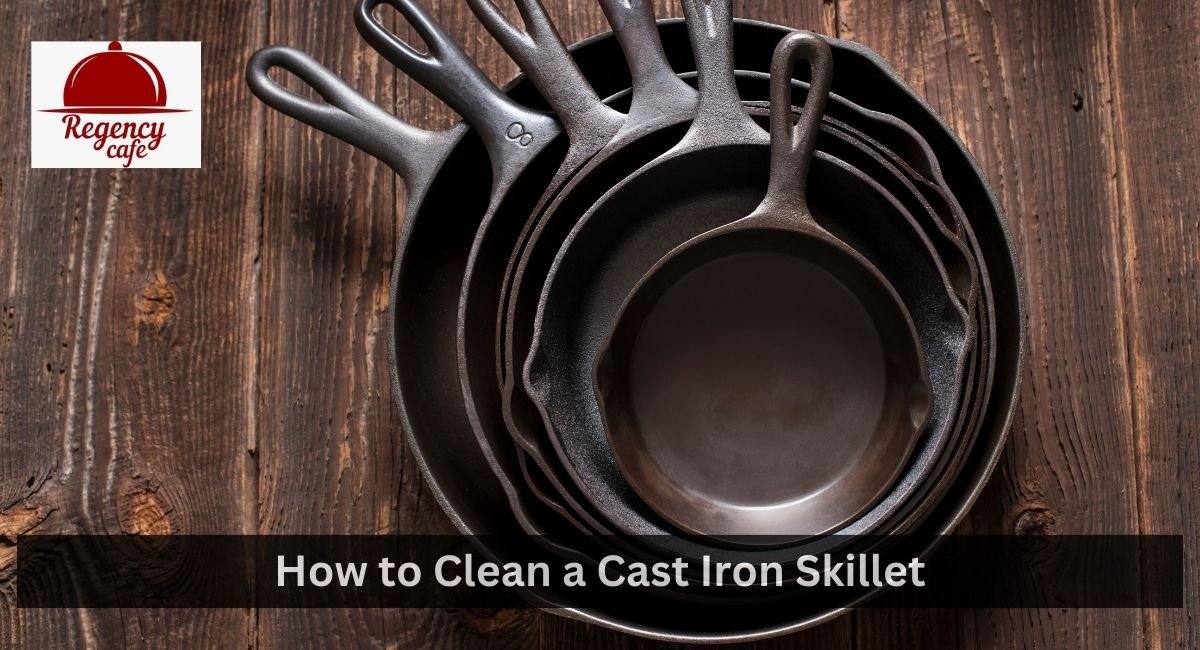
Your skillet should be thoroughly scrubbed inside and outside – including its handle – using either an old toothbrush or wire wheel if necessary.
Once scrubbed, rinse your pan without soap (conventional wisdom says this strips seasoning away), dry the skillet thoroughly, and begin the fun part – getting rid of stubborn residue like rust!
Let us discuss ways to clean cast iron skillet.
Scrub
Cast iron pans can become rusted if exposed to too much water or used with acidic foods (like tomatoes). Before beginning to cook again in it, rusted skillets must be scrubbed down thoroughly as this will remove both rust and any food particles stuck to its surface. This process should remove rust and any food particles stuck onto its surface, eliminating any potential health hazards.
Use a steel wool scouring pad and hot water to remove rust from your skillet quickly. Scrub in small circles around rustiest areas before rinsing your pan after cleaning so all traces of food and dirt have been eliminated.
A vinegar soak could be in order if your skillet has developed severe rust. Submerge it in equal parts white vinegar and hot water for up to eight hours; this should effectively remove rust and any leftover seasoning from its surface.
Rinse your skillet thoroughly and dry it with a paper towel before applying a thin layer of oil to reseason and prevent further damage. Allow your pan to cool completely before returning it to storage, preferably away from moisture or light sources.
Oil
Use neutral cooking oil with a high smoke point to apply a thin oil film all over your skillet’s interior and exterior surfaces, including its handle, to reseason it and help minimize future stickiness. This process will refresh and maintain its seasoning properties, thus helping prevent sticky situations in future use.
Depending on how rusty and crusty your pan is, it may require stripping to bring back its shine. We do not advise plunging an already scorching hot cast iron into cold water (this process is known as thermal shock and could potentially ruin it). Instead, give the pan a soak in mildly soapy hot water with nonabrasive scrubby pads until all rust and gunk have been removed; then use steel wool if necessary to completely strip away its coating; rinse, and dry completely afterward.
If the rusting is minimal, you can skip this step and continue with regular cleaning steps. However, for pans that have significant rust damage, pour one cup of coarse salt directly into the skillet. At the same time, if it’s still warm, rub any rusty areas using a nonabrasive sponge or towel before rinsing and drying thoroughly.
Season
After cleaning and drying your skillet completely, use a paper towel or clean rag to apply a thin layer of oil over all surfaces – both inside and out – with a light spray of oil to help avoid sticky residue from building up when you use your pan and prevent rust while not in use. This step should also be performed before storing your pan for storage purposes.
Soap or abrasive scrubbers should not be used on seasoned cast iron, as these will strip its protective oil coating away and leave it more susceptible to rusting. Instead, coarse salt mixed with a soft sponge or brush may help remove stuck-on debris quickly, or use boiling water in your pan for extra stubborn food debris removal.
If your seasoned cast iron has developed a thick layer of rust, before beginning the seasoning process again, you must first remove it. To do this, soak your pan for up to eight hours in equal parts white vinegar and water before rinsing and scrubbing, and then rinse again for good measure.
As a final step, add a coating of cooking oil to your pan – interior and exterior surfaces as well as any handles (if applicable). Any neutral-tasting oils such as canola, vegetable, avocado, or peanut will do. Allow the pan to air dry thoroughly before storing; also, be sure that any hot cookware has thoroughly cooled before handling again.
Conclusion: Preserving the Legacy of Your Cast Iron Skillet
In kitchen essentials, the cast iron skillet stands as a timeless champion, and learning how to clean it is akin to nurturing a culinary legacy. As we conclude this journey into the art of caring for your cast iron skillet, it becomes evident that this kitchen workhorse demands a unique set of practices to maintain its unparalleled durability and versatility.
In essence, cleaning a cast iron skillet is more than a routine maintenance chore; it’s a culinary ritual connecting you with the generations of cooks who have relied on this sturdy piece of cookware. As the layers of seasoning build over time, each meal cooked in your well-maintained skillet becomes a testament to its rich history.
So, the next time you savor the crispy edges of a perfectly seared steak or the golden perfection of cornbread, remember that your cast iron skillet plays a crucial role in bringing these flavors to life.
Treat it with care, clean it with respect, and let it continue to be the cornerstone of your kitchen adventures for years. In preserving the legacy of your cast iron skillet, you maintain a piece of cookware and celebrate the enduring tradition of good food and shared moments around the dining table.


